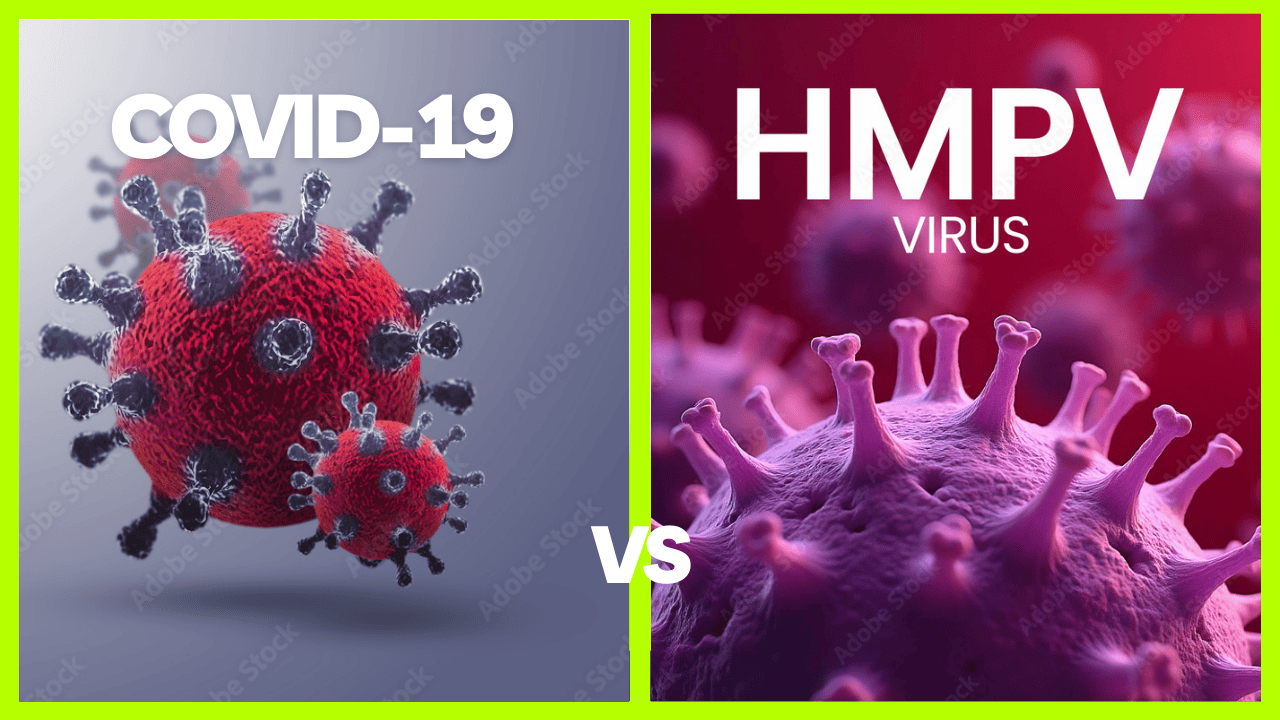The COVID-19 pandemic has made us all hyper-aware of respiratory illnesses, their symptoms, and potential consequences. But recently, another respiratory virus has been making headlines: the Human Metapneumovirus (HMPV). While COVID-19 has been the focal point of global concern, HMPV is not new to the medical world. So, how do these two compare? Is HMPV more dangerous than coronavirus? Let’s dive into the differences and similarities between these viruses with insights from medical experts.
What is Human Metapneumovirus (HMPV)?
HMPV is a respiratory virus first identified in 2001. It belongs to the Paramyxoviridae family, which also includes respiratory syncytial virus (RSV). HMPV primarily affects the upper and lower respiratory tract and is particularly common among children, the elderly, and individuals with weakened immune systems. Although it is not as widely known as COVID-19, HMPV has been a consistent contributor to seasonal respiratory infections.
What is COVID-19?
COVID-19, caused by the SARS-CoV-2 virus, is a member of the coronavirus family. It emerged in late 2019 and rapidly spread worldwide, leading to a pandemic. COVID-19 has been associated with severe respiratory illness, widespread hospitalizations, and a significant global death toll, particularly in individuals with pre-existing conditions or those over 65.
Similarities Between HMPV and COVID-19
- Respiratory Symptoms: Both viruses primarily affect the respiratory system. Symptoms like cough, fever, and shortness of breath are common in infections caused by HMPV and SARS-CoV-2.
- Transmission: Both viruses spread through respiratory droplets when an infected person coughs, sneezes, or talks. Close contact and touching contaminated surfaces can also facilitate transmission.
- Risk Groups: Both viruses pose a higher risk to children, the elderly, and immunocompromised individuals.
- Seasonality: While HMPV infections tend to peak during the winter and early spring, COVID-19 has shown seasonal patterns as well, though it is capable of spreading year-round due to its global impact.
Human Metapneumovirus Vs Covid-19: Which Virus Poses a Greater Threat?
Here’s a comparison of HMPV vs COVID-19:
| Aspect | Human Metapneumovirus (HMPV) | COVID-19 |
| Discovery | Identified in 2001 | Emerged in 2019 |
| Causative Agent | Human Metapneumovirus (HMPV), a paramyxovirus | SARS-CoV-2, a coronavirus |
| Transmission | Airborne droplets, close contact | Airborne droplets, close contact, surface contact |
| Incubation Period | 3-5 days | 2-14 days (average: 4-5 days) |
| Common Symptoms | Cough, fever, wheezing, shortness of breath, runny nose, fatigue | Fever, cough, fatigue, difficulty breathing, loss of taste/smell, muscle aches |
| Severe Cases | Can lead to bronchiolitis, pneumonia, especially in infants and elderly | Can lead to severe pneumonia, acute respiratory distress syndrome (ARDS), death |
| Complications | Ear infections, asthma exacerbation, pneumonia | Acute respiratory distress, blood clotting, multi-organ failure |
| At-Risk Groups | Infants, young children, elderly, individuals with weakened immunity | Elderly, individuals with underlying health conditions (e.g., diabetes, heart disease) |
| Treatment | Supportive care (e.g., oxygen, hydration) | Antiviral treatments (e.g., Remdesivir), supportive care, corticosteroids |
| Vaccination | No specific vaccine available | Multiple vaccines available (e.g., Pfizer-BioNTech, Moderna) |
| Seasonality | More common in the winter and spring months | Can occur year-round, with spikes in winter and colder months |
| Testing | PCR or antigen testing specific to HMPV | PCR, rapid antigen tests, and antibody tests for SARS-CoV-2 |
| Prevention | Good hygiene, avoiding close contact | Vaccination, mask-wearing, social distancing, hand hygiene |
Is HMPV More Dangerous Than COVID-19?
According to Dr. Lisa Carter, a pulmonologist, the answer largely depends on the context:
- Severity: COVID-19 has a higher potential for severe disease and complications, including multi-organ failure and long-term health impacts (commonly referred to as Long COVID). HMPV, while potentially serious, typically causes milder illnesses in healthy individuals.
- Spread: SARS-CoV-2’s ability to spread rapidly and mutate into more transmissible or immune-evasive variants makes it more dangerous on a global scale.
- Fatality Rate: The fatality rate of COVID-19 has been significantly higher compared to HMPV, especially during its early waves.
However, Dr. Carter cautions that HMPV should not be underestimated. In vulnerable populations, it can lead to severe lower respiratory tract infections, including bronchiolitis and pneumonia, which may require hospitalization.
How Can You Protect Yourself?
- Good Hygiene Practices: Wash your hands frequently with soap and water, use hand sanitizers, and avoid touching your face.
- Masks and Distancing: Wearing masks and maintaining physical distance can help prevent the spread of respiratory viruses.
- Stay Up-to-Date with Vaccines: While there is no vaccine for HMPV, ensuring you’re vaccinated against COVID-19 and other respiratory illnesses like the flu can reduce overall risk.
- Seek Medical Advice: If you or your loved ones experience persistent or severe respiratory symptoms, consult a healthcare professional promptly.
Final Thoughts
While HMPV and COVID-19 share some similarities, the latter has had a far more significant impact on public health due to its higher severity, transmissibility, and global spread. That said, HMPV is not to be ignored, especially in high-risk groups. Both viruses highlight the importance of robust public health measures and personal precautions to minimize the risk of infection.
